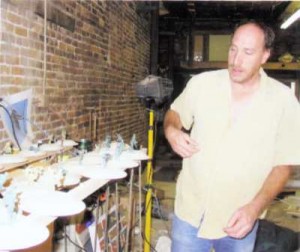Article by Wynelle Catlin
Local History – December 2003 – Colorado Central Magazine
ROB AND KATIE FERRIS are the proud owners of a Sears Honor Bilt Home which is their Tumble Creek Ranch residence in north Chaffee County.
For 75 years, the sturdy well-constructed house has stood, surrounded by a white picket fence, on the gently sloping base of Buffalo Peaks, a few miles north of Buena Vista.
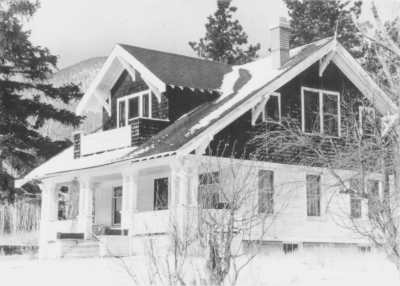
The Westly floor plan kit for the house was ordered from the Sears catalog in 1928 for a cost of around $2500, a substantial sum at that time.
Two boxcars containing pre-cut, notched and numbered studs, rafters, joists and other lumber, along with paint, nails, shingles and other essential building materials were unloaded at a siding a quarter mile from the house site. The materials, along with electrical wiring, fixtures, blueprints and instruction booklet were carted to the building site by horse and wagon.
When constructed, the house had a living room, music room, dining room, and kitchen downstairs, and three bedrooms and a bath upstairs. Heat was provided by a coal furnace in the basement which sent heated air through a grate in the living room. Water was piped into the house from a spring-fed cistern.
The Ferrises added a wing to each side of the house and enlarged the bathroom. Their renovations have preserved the integrity of the original design, but added to the livability of their home.
The property, now named Tumble Creek Ranch after one of the two creeks running through it, was homesteaded in the 1860’s by John and Alice Langhoff. Later, a nephew, seaman Frank Baumdicker, came to visit and stayed to raise his family there. The Baumdickers bought the Sears kit and erected the house.
Dick Scott obtained the property from the family.
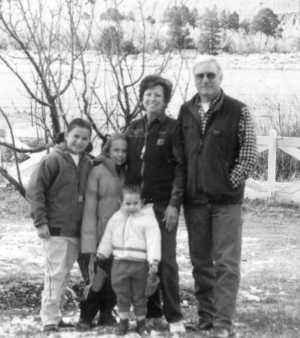
Ferris, who grew up in Tulsa, Oklahoma, visited the area in 1981. Later, he persuaded Scott to sell him part of the acreage on which he built a vacation home.
Ferris purchased the land with the Sears Home on it and moved into it in 1990.
A retired civil engineer, whose prior residence was Tampa, Florida, Ferris was familiar with the Buena Vista area from his college days, when he spent time in a nearby surveying camp while attending Oklahoma State University.
In 1987, the house and ranch were honored by being included in a photographic exhibit of America’s Uncommon Places: the Blessings of Liberty, sponsored by the National Trust for Historic Preservation.
ONE OF 16 SITES featured, it shared the honor with such prestigious places as the Virginia home of James Madison; Independence Hall in Philadelphia; Bath Iron Works in Maine; and Fort Davis, a frontier fort in Texas. The tour of photographs, which focused on outstanding places of historical preservation, traveled to major American cities as a bicentennial celebration of the U.S. Constitution.
Tumble Creek Ranch with its Sears Honor Bilt Home is a look into the past of this part of Colorado.
On the north side of the house is a long low outbuilding which Ferris said was the chicken house. There are remnants of fencing which once enclosed the chicken yard.
A blacksmith shop stands behind the house. This was a necessity in earlier days when homesteaders had to keep horses shod, and wagons and farm machinery repaired.
Several rocked-in cellars are built into the side of the mountain slope. One was the ice house. Ice was cut from Ice Lake in the winter, and brought to the homestead, where it was covered with hay for insulation and stored in the ice house to be used during summer months.
One of the cellars was a root cellar where apples, potatoes, onions and other root crops grown in summer and fall were stored for winter consumption. Other vegetables and fruits were preserved by canning or jelly-making and stored on shelves in the root cellar.
The spring house is no longer standing over the ever-flowing spring; it provided storage for milk, butter and cheeses.
Directly behind the house is an old frame building moved in from the railroad station in Granite.
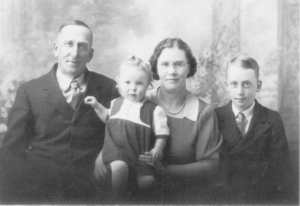
Farther up the slope is an older Baumdicker home. The original part was a tiny two-room log cabin, and two rooms of frame lumber were added later. The walls were lined in 1905 newspapers, which still cling to the planks.
Rusting in the weeds is a contraption which once picked up bales of hay and loaded them onto wagons to be carried to the barn for storage. The apparatus was horse-drawn and had rotating hooks to grab the bales.
Also peeking through the weeds is a sawmill with a large rotating head mounted on wheels. Trees could be sawed into logs or logs run through to make planks. Most of the logs and lumber used in the original buildings were probably cut on this saw.
To the south of the house is a leaning plank building also moved from the railroad station in Granite. Ferris plans to shore it up to keep it from tumbling over.
Nearby is another log storage building. Yields from crops were penciled inside on the log walls.
One building shows evidence of once housing horses, and another was probably the milking barn.
In a milking barn, each stall had a trough. A cow stuck her head through an opening to reach the trough, and a loose board was moved over and fastened with a loop to hold her head inert until milking was completed.
(This author can vouch from personal experience that a milking stall didn’t keep the cow from kicking!)
Outside the barn, a tall upright frame with a log fastened securely across the top was evidently where slaughtered animals were hung to be dressed out.
Beside and in front of the house, modern barns now house livestock. Katie Ferris started their longhorn herd with two cows, May and Flower, honoring Katie’s ancestors who came over on the Mayflower. Today the herd has been reduced to May, her two yearling calves and a weanling.
Twelve llamas prance with stately grace across the pasture, viewing visitors with dark eyes under incredibly long eyelashes.
Ferris once raised and trained Missouri Fox Trotter horses. Twelve of those still graze the range, although Ferris is no longer in the business of breeding, selling or training them.
Buffett, a border collie, and D’Ogie, a golden retriever, help run the ranch, and visitors are greeted with loud honking and quacking from a goose and three ducks.
Ferris thinks the rich meadow fields, which are now covered in broom grass and alfalfa, once held fields of lettuce, a major source of income in Chaffee County in the early 1900’s. Lettuce production may have enabled the Baumdickers to purchase the house kit from Sears in 1928.
A two-mile long Langhoff irrigation ditch running through the property is still in use.
The Langhoff name remains on gravestones in the Langhoff-Baumdicker cemetery which is a quarter of a mile up the mountain slope behind the Sears house.
Alice Langhoff died in 1891, John in 1913. Frank Baumdicker was interred in 1943. Two sons, Walter and Rudolph, are buried there, as is A.L. Rust, a hired hand. But the oldest remains lie in a single tiny fenced grave which was the reason for the establishment of the cemetery.
Ella Baumdicker, 3, and her brother, Oscar, 10 months, died in 1885 in a fire which destroyed their log cabin home. Ella was apparently playing with matches while their mother was tending orphan calves in the barn. By the time their mother was aware of the fire, it was too advanced for her to rescue the children.
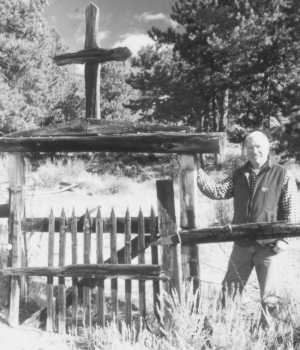
Baumdicker relatives come each Memorial Day and place flowers on the graves. Ferris doesn’t want to encroach on the families in the cemetery, so he has erected a fence nearby which will be the Ferris cemetery.
Rob and Katie Ferris are good caretakers of their Sears Honor Bilt Home, its history, and the artifacts of a bygone era that surround the house. The couple married in a ceremony performed in the living room five years ago. They have three children each, and share nine grandchildren with a tenth on the way.
Wynelle Catlin says she’s “semi-retired.” She has written for several Western history magazines, and “long-ago wrote a children’s book published by Doubleday.” She recently moved to Buena Vista.


